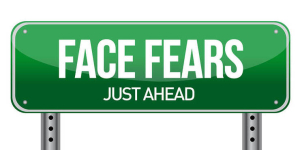Japan’s Nikkei closed 2013 with its strongest annual performance in six years. The Japanese stock market posted remarkable gains of 40 percent in 2013. The country’s jobless rate is an enviable 3.8 percent and, under the guidance of Prime Minister Shinzo Abe, Japan is once again drawing interest from foreign investors for the first time in two decades.
Yet, the Japanese yen has plummeted against other major currencies, including the USD, the euro and British sterling. At Friday’s close, the dollar stood at 104.82 yen, just below the 105 yen mark that has become the new standard. One year ago, the USD was at 86 yen. The yen has lost 20 percent against the dollar, the euro and British pound.
The question is what will happen to the yen in 2014. Many analysts project the USD will climb to 110 yen. There are a number of factors contributing to this assessment, including the probability of further tapering by the Federal Reserve of its bond buying initiative.
Shinzo Abe’s Three-Point Plan
Shinzo Abe returned to the office of Prime Minister in December 2012 after holding the office in 2006 and 2007. His economic policy, sometimes called Abenomics, is guided by a three-point plan. The three components are called arrows.
Arrow 1 – Arrow 1 calls for massive amounts of quantitative easing.
Arrow 2 – Implementation of an expansionary fiscal policy.
Arrow 3 – Fulfillment of a long-term growth strategy.
Basically, arrows 1 and 2 are designed to instill growth in the economy while the third arrow is designed to ensure that the rate of growth is sustained.
On April 4, 2013, the Bank of Japan announced a $1.4 trillion stimulus program. The yen suffered big losses during April and May but Arrow 1 was underway.
Another component of Abenomics is to lift inflation from the presiding 0.9 percent annual rate to 2.0 percent by 2015. By October, Japan’s inflation rate was making progress at 1.1 percent.
The weakened yen has proven beneficial to Japanese exporters. After GDP growth spiked upwards to 4.5 percent in the first quarter 2013, growth slowed in quarters 2 and 3. However, economists expect strong growth in the 4th quarter 2013 and in the 1st quarter 2014. GDP is projected to increase by 2.6 percent in 2014.
New Consumption Tax
The fly in Abenomics could come down to a new consumption tax to be implemented in the Spring of 2014. Proceeds from the new tax will be used to boost social security for the aging population. The new tax will raise the existing consumption tax from 5 percent to 8 percent in 2014 and to 10 percent in October 2015.
The timing of the tax hike could prove problematic. At 5 percent, Japan has one of the lowest consumption taxes in the developed world but the Japanese recovery is still fragile. When similar increases were levied in 1997, the Japanese economy plunged into recession.
In October, the administration announced a 5 trillion yen stimulus that is designed to offset the pain of the tax hike. The stimulus will include cash assistance to low-income families, lower corporate taxes and infrastructure investment. The Bank of Japan has said it stands ready for more easing if the economy slows.
In 2014, the dollar is poised to post further gains against the yen. If the US economy can hold its momentum and if tapering continues, a stronger dollar will emerge. Of course, the fly in the ointment is whether Congress will get in the way of the US recovery. Barring direct or indirect Congressional intervention, the USD should find its way to 110 yen in 2014.
Hiland Doolittle







